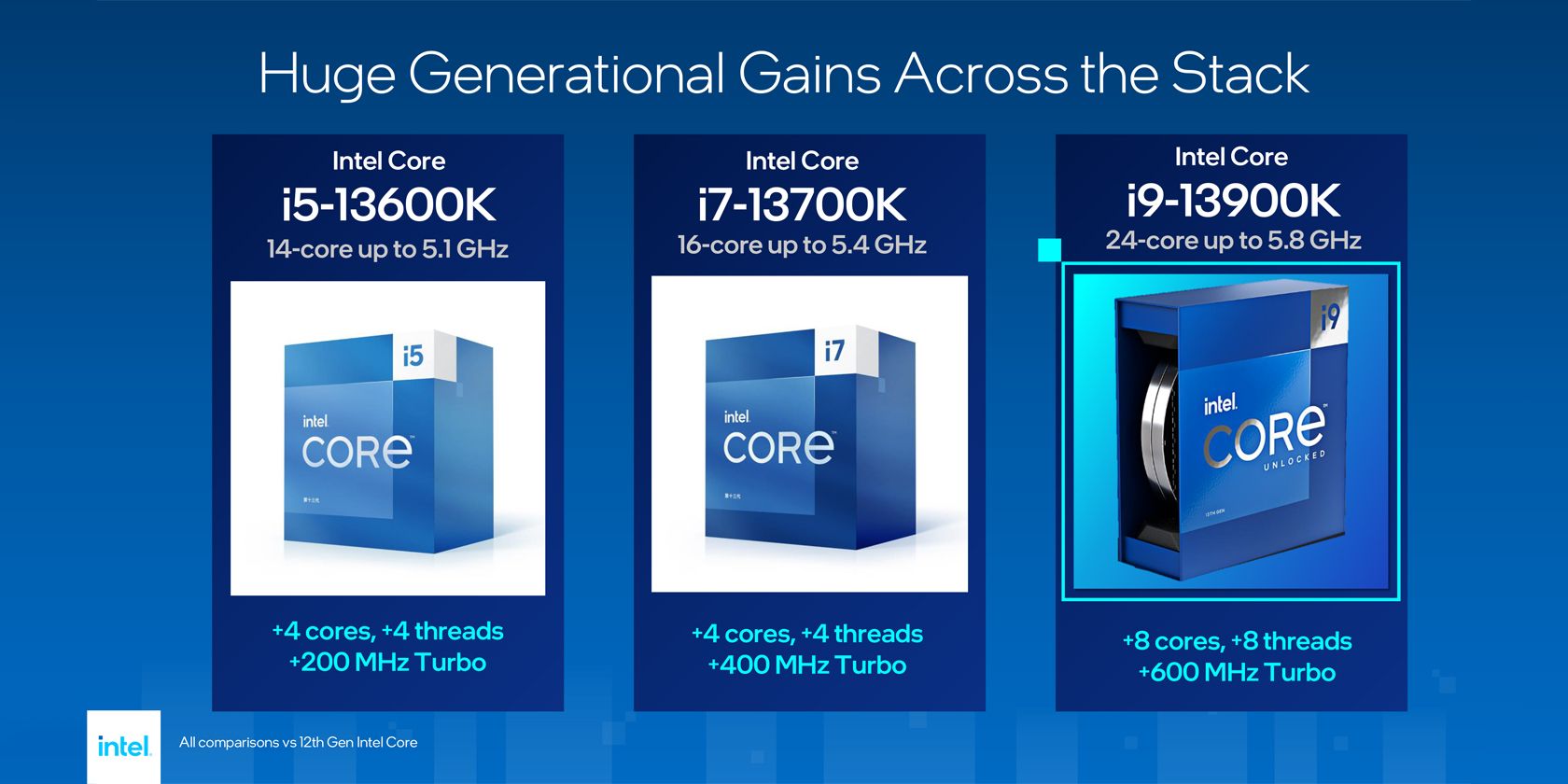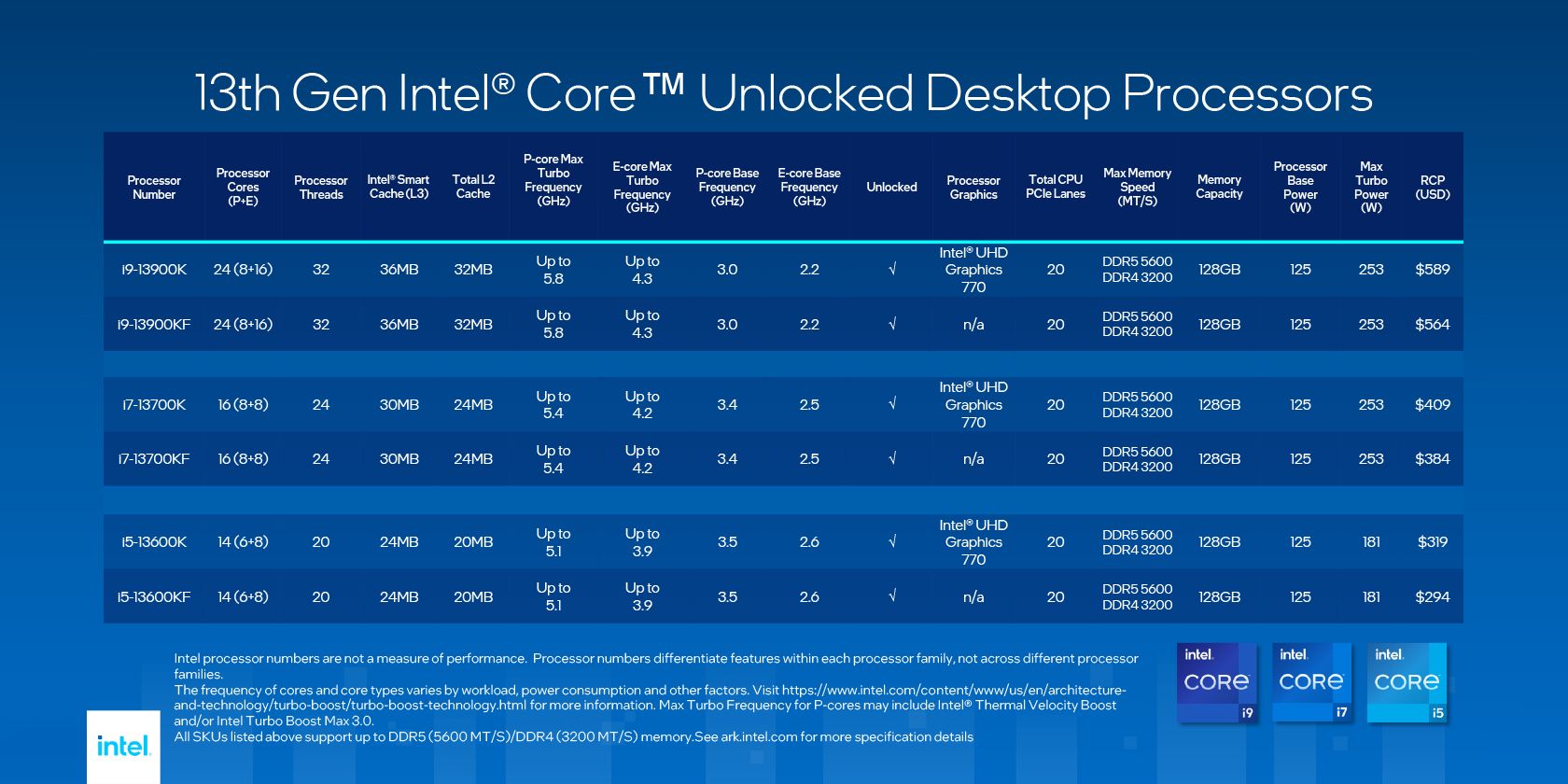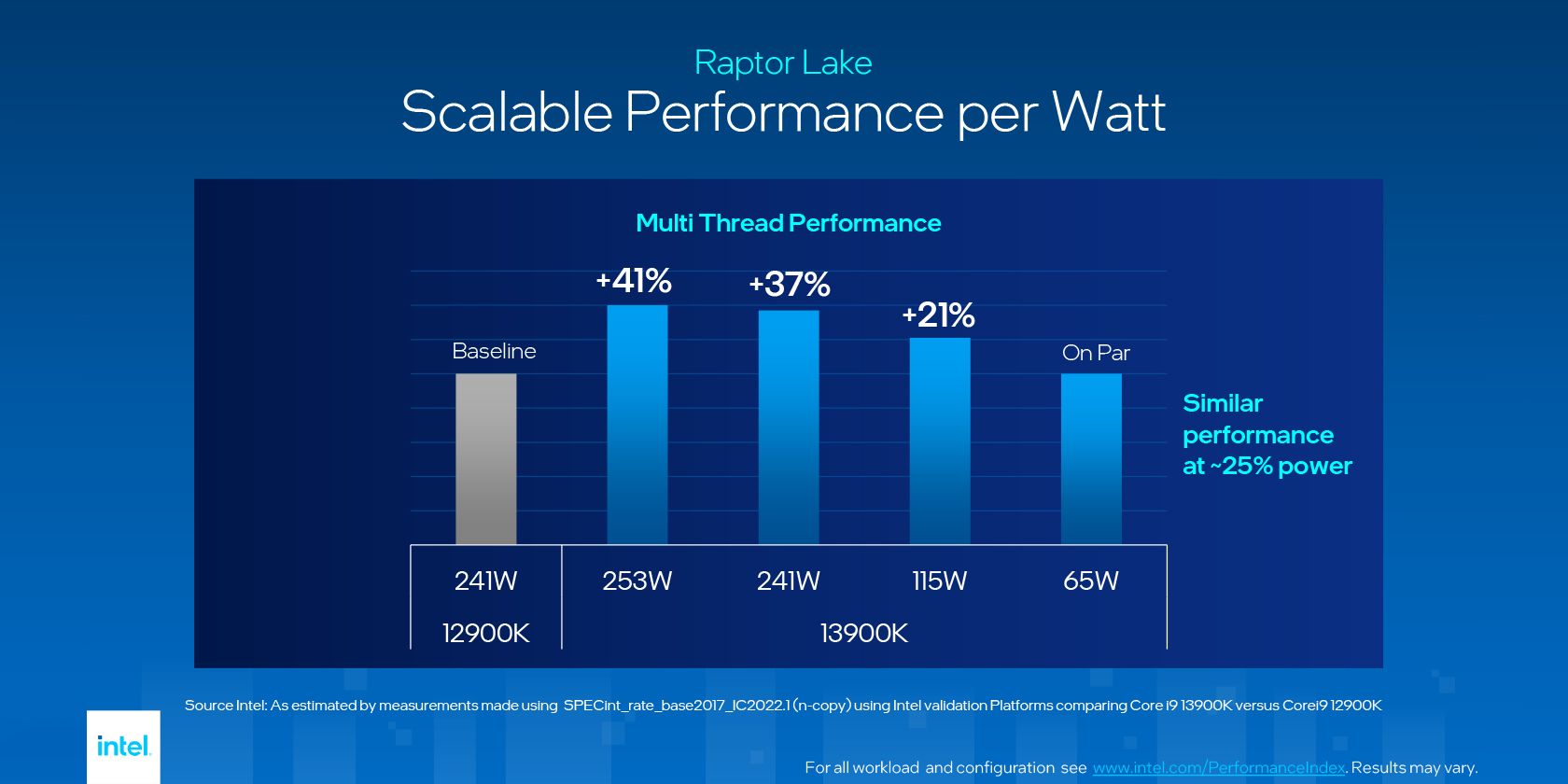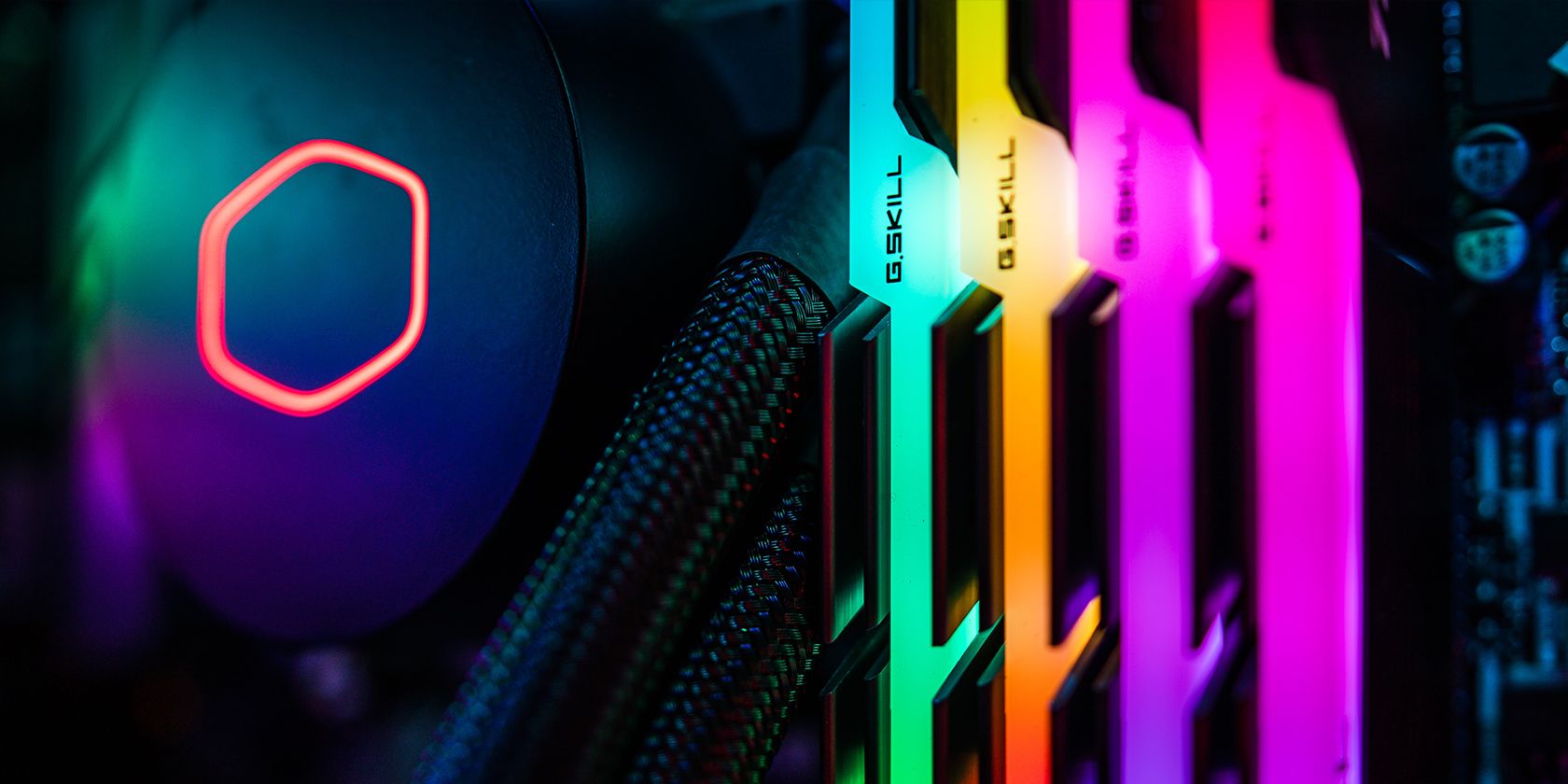During the Intel Innovation keynote on September 27, 2022, Intel finally revealed its 13thGeneration Raptor Lake chips. This follow-up to the powerful 12th-Generation Intel Core processors is expected to provide more power and efficiency.
Announced just a month after AMD premiered its new 7000-series chips, the 13th-Gen Intel chips are expected to trade blows with Team Red's latest offerings. So, what processors exactly are we getting from Team Blue?
Intel's 13th-Gen Processors
During the keynote, Intel revealed six 13th-generation Raptor Lake chips: the i5-13600K, i7-13700K, and i9-13900K, plus their KF variants with no onboard graphics. These chips offer more cores and faster clock speeds while delivering more efficiency.
Aside from that, it also features support for the latest technologies, like DDR5 memory and PCIe Gen 5.0, while remaining backward compatible with DDR4 and PCIe Gen 4.0. Top-end Intel Core i9 Unlocked chips also feature Adaptive Boost Technology and Thermal Velocity Boost, allowing the processor to ramp up its frequency even further, depending on the power and thermal headroom availability.
Each chip model also has a greater CPU cache than the previous generation. This increase is warranted because of the greater number of cores and higher clock speeds that the Raptor Lake chips can hit.
More Cores
All 13th-Generation processors are getting a bump in their core numbers. The i5-13600K, which previously had no E-Cores, is now getting eight of these, bringing its total cores to 14. The i7-13700K also gets eight Efficiency Cores, up from Alder Lake's four E-Cores. Lastly, the i7-13900K doubles the previous gen's eight E-Cores to a whopping 16, giving Intel's top enthusiast chip a total of 24 cores.
Although the performance cores for all Raptor Lake chips remain the same number as the 12th-Gen CPUs, the increase in Efficiency Cores allows the 13th-Gen CPUs to perform better in multitasking.
For example, suppose you're rendering a video on Adobe Premiere Pro and launch work on another app like Adobe Lightroom. When Premiere Pro is in the background, its workload is transferred to the E-Cores. You can continue working on Lightroom using the P-Core with minimal effect on performance.
Eye-Watering Clock Speeds
Aside from the additional E-Cores, the 13th-Generation processors all receive a bump in clock speed. The 12th-Gen 12900K tops out at 5.2GHz. However, the mainstream i5-13600K now has a max clock speed of 5.1GHz.
If you go up the model numbers, the i7-13700K can hit 5.4GHz, while the i9-13900K has a blazingly fast 5.8GHz maximum clock speed.
Intel even announced they'll release a Raptor Lake chip that'll hit 6.0GHz out of the box in early 2023. This is a massive performance boost, and we're excited to see how these chips perform in real-world tests.
More Power, Yet Increased Efficiency
With all these improvements, you can expect these chips to have a massive power draw—and you're right. Although they still have the same base TDP of 125W, they require significantly more when on Turbo.
The i5-12600K, i7-12700K, and i9-12900K had a max TDP of 150W, 190W, and 241W. On the other hand, their 13th-Gen counterparts now require 181W for the i5-13600K and 253W for both the i7-13700K and i9-13900K. These are massive increases, especially for the i7-13700K. However, these also come with a massive bump in processing power.
Despite that, the company claims its Raptor Lake chips are more efficient than the Alder Lake CPUs. According to Intel, its validation platforms showed that a 13900K running at 65W performs on par with a 12900K at 241W. And when you push the i9-13900K at max TDP, the chip performs 41% better than its predecessor.
RAM Selection
While Intel's Raptor Lake chips are DDR5 compatible, it still supports DDR4 RAM, allowing computer builders to upgrade their 12th-gen processors without requiring a RAM upgrade. This is unlike AMD's Ryzen 7000 processors, which only work with DDR5 memory.
Although DDR4 RAM might bottleneck the CPU's performance, it allows users to upgrade their systems gradually. After all, DDR5 RAM is still expensive. So, even if you don't have the budget to upgrade your RAM, you could already enjoy the increased performance delivered by the Raptor Lake processors.
Intel 13th-Gen: Going Head-to-Head With the Ryzen 7000
AMD's Ryzen processors allowed it to gain on Intel, performing so well that it allowed the company to gain up to half of the market.
However, Intel will not take this lying down. They released phenomenal chips in the form of the Alder Lake CPUs, and Raptor Lake looks equally impressive. However, although the Raptor Lake processors are building up on what Intel accomplished with its 12th-Gen chips, AMD's Ryzen 7000 CPUs are no slouch either.
These two new processor families are heating the CPU industry, with both processors delivering remarkable performance. Naturally, we can't wait to get our hands on one, so we can check out both and see how each performs against the other.
"chips" - Google News
October 04, 2022 at 12:05AM
https://ift.tt/zregXQu
Intel's Raptor Lake Chips Are Coming: What's New With the 13th-Gen Processors? - MUO - MakeUseOf
"chips" - Google News
https://ift.tt/g9VtKXH
https://ift.tt/oJPn0qU
Bagikan Berita Ini


















0 Response to "Intel's Raptor Lake Chips Are Coming: What's New With the 13th-Gen Processors? - MUO - MakeUseOf"
Post a Comment